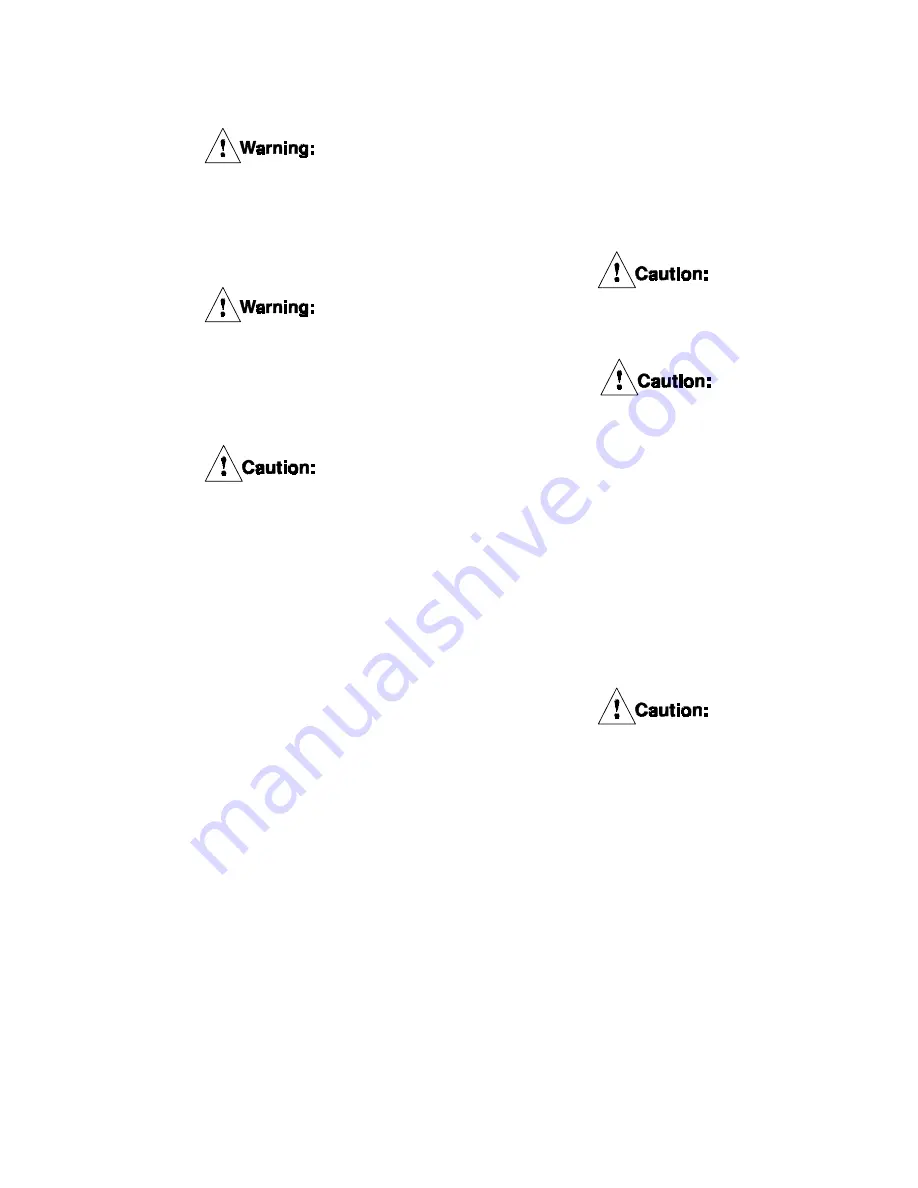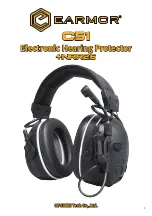
6.0
COM PONENT M AINTENANCE
Before doing any maintenance work on
the WCB unit, make sure that the
machinery will remain in a safe position.
Failure to do so could result is serious
injury or possibly death.
Only qualified maintenance personnel
should install, adjust or repair these WCB
units. Faulty workmanship will result in
unreasonable exposure to hazardous
conditions or personal injury.
Read these instructions thoroughly
and review until you fully understand
the parts replacement steps before
proceeding with the work described
in this section. Failure to follow these
instructions can result in unreasonable
exposure to hazardous conditions or
personal injury.
6.1
Cylinder Seal Replacement
Note: Item numbers (# ) are show n on
Figures 1, 3, 4, 5, 6 and 7.
6.1.1
See the Section 11.6 for the appropriate seals
for each WCB tensioner.
6.1.2
Disconnect the air connections.
6.1.3
While supporting the cylinder, loosen the
locknuts (18) ONE TURN AT TIME and in an
alternating (crossw ise) pattern until the spring
force is completely relieved. Remove the
locknuts and w ashers (17). Remove any w ear
spacers stored under locknuts. Mark all of the
w ater outlet ports for identification. Deep w ell
sockets are required. See table 9 for size and
depth of socket required.
6.1.4
Using lifting equipment, carefully remove the
cylinder (19) and piston (33) as an assembly.
Set aside in a clean area.
Note: If a stud (6) should happen to come
loose, remove it completely, clean the threads
on the stud and the threads in the mounting
flange. Apply Locquic
®
Primer Grade " T" to the
stud threads. After the threads have dried,
assemble to the mounting flange using Loctite
®
#262. The end of the stud must not extend
past the mounting surface of the mounting
flange.
Loctite
®
#262 must be shaken prior to
application.
Loctite
®
#262 may irritate sensitive skin.
Refer to the product label for proper
safety precautions.
6.1.5
Place the cylinder and piston assembly
w ith the piston facing dow n on blocks
approximately 6" (150 mm) high. The blocks
must only contact the cylinder (19) so that
the piston (33) w ill be free to move out of
the cylinder bore.
6.1.6
If a regulated air line is available, the piston
can be partially ejected from the cylinder by
applying no more than 15 PSIG (1.0 bar)
to the cylinder.
Application of a higher pressure may
cause damage to the components.
6.1.7
To complete the removal of the piston from the
cylinder, open all air inlets.Alternately insert a
0.50" (12 mm) diameter by 6" (150 mm) long
w ood dow el into each air inlet and gently tap
the piston w ith a mallet so that it moves
evenly out of the cylinder. Be careful not to
damage the sealing surfaces of the piston or
cylinder by cocking the piston in the cylinder.
6.1.8
Inspect the cylinder sealing surface condition
for nicks or scratches or any other defect
w hich may prevent the seals from being
effective. Replace the cylinder, if necessary.
6.1.9
Noting how the lips of the seals are oriented in
the piston grooves, remove the seals.
PDF FORMAT
24
© Copyright Eaton Corp., 1995. All rights reserved.
Summary of Contents for 146246A
Page 5: ...18 24 36 WCB Single Disc Figure 4 PDF FORMAT 4 Copyright Eaton Corp 1995 All rights reserved ...
Page 6: ...18 24 36 WCB Dual Disc Figure 5 PDF FORMAT 5 Copyright Eaton Corp 1995 All rights reserved ...
Page 7: ...18 24 36 WCB Triple Disc Figure 6 PDF FORMAT 6 Copyright Eaton Corp 1995 All rights reserved ...
Page 8: ...Figure 7 18 24 36 WCB Quad Disc PDF FORMAT 7 Copyright Eaton Corp 1995 All rights reserved ...
















































